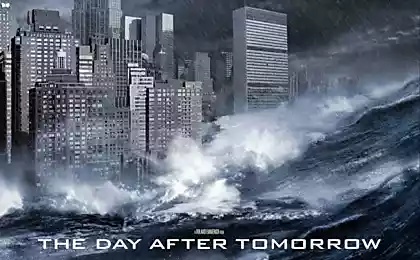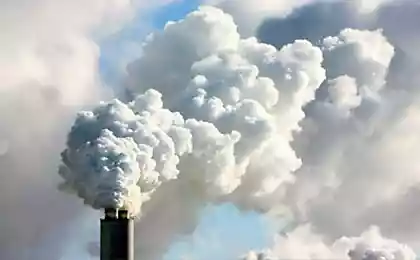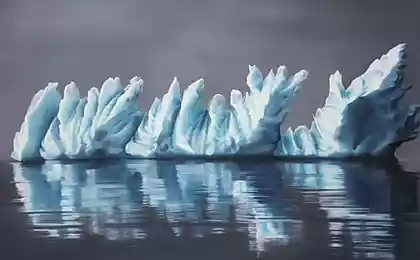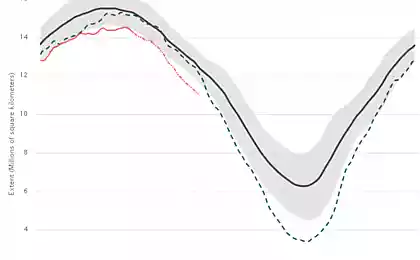503
The theory of warming "it is freezing"

What to expect in the coming years – widespread melting of ice, or new ice age? The natural variability makes new amendments to the climate forecasts.
In recent time the attention of leading world powers chained to the Arctic shelf seas which lies a significant part of the world's reserves of oil and gas. In fact, started the competition for access to these resources.
But what will be the climate in this region in a year, two, ten, fifty? He won't do the ice oil platform where they stand while in relative safety? On this account the world science has not yet developed a unified position, arguments and conclusions sometimes differ diametrically. My own point of view on the climate of the Northern latitudes of the famous Russian oceanographer academician Gennady Matishov. Chairman of the South scientific center of RAS believes that the warm days are over.
The close cooperation of the SSC, located in Rostov-on-don, and Murmansk marine biological Institute RAS allows you to compare the climate of different latitudes. The focus of the research – the Northern Barents and Kara sea, southern sea of Azov and the Black. More than 20 years of the SSC and MBI together with American colleagues, have created a database on climate and biology of the seas of the Arctic ocean and the southern seas. In the enormous amount of work, in addition to modern data included observations of water temperature, salinity, oxygen concentration, condition and composition of the plankton over 150 years. This allowed for a historical reconstruction of the climate of both Northern and southern regions.
The story of "tells": the climate is cyclical warm periods followed by periods of cooling. Dutch seafarers in the early XIX century, their set of New Land laid the Foundation for future understanding of climate fluctuations in the Arctic. The story was "the window", when the Northern sea route could pass in a single navigation without encountering ice. So, in 1878 nordenskiöld on the ship "VEGA" passed during one navigation of Stockholm almost to the Bering Strait. In 1932 and 1933 the icebreaking ship "A. Sibiryakov" and "Chelyuskin" almost repeated the success. The Northern sea route was ice-free and in 1936. Analysis of events shows that the major epoch of warming in the Arctic occurred with a period of 60 years. There are shorter periods, such as 30-year cycles of freezing Kola Bay.
"Warm cycle, due to the powerful advection (transfer parallel to the earth's surface – ed.) heat from the Atlantic, was observed in the Arctic and in the beginning of the XXI century. This gave rise to the talk of the imminent melting of the Arctic ice. In February 2012, the area of ice cover in the Barents sea showed the absolute minimum on record: 400 thousand square kilometers against "normal" 860 thousand. Since then does not stop the discussion of the cyclical climate. And it's not idle interest: the presence of ice directly on the prospects of Arctic shelf development. Price forecast, given the volume of investments in the North and the commercial risk is huge," says the academician G. G. Matishov.
Worth noting: the cold spring and summer of 2013 led to the growth of the ice cover in the Arctic. Its area has increased by about half in comparison with 2012. In September 2013 the ice barrier in the Vilkitsky Strait, a width of nearly 100 km, has become an obstacle for bibledoctrines shipping. This "clot" increases that may be indicative of the beginning of the cold epochs in the Arctic. Over the past two years, there have been ship collisions with icebergs and large ridges in areas previously almost free of ice. In the result, the holes got the icebreaker "50 years of Victory", the tanker "Nordvik" and others. And these cases are more.
It is impossible to understand the climate of the Arctic, along with if the North Atlantic is not taken into account global processes in Siberia, the Bering sea, Europe and the South seas, – said G. G. Matishov. In the twenty-first century in the South seas was observed to extreme temperatures and areas of the ice. In the South of Russia and in southern Europe in mid-January, established abnormally cold weather. Such a harsh winter was in 2007 and 2012. Duration of ice cover in the Caspian and Azov reached 50-80 days. For two or three months "skidded" shipping and ferry crossing in the Kerch Strait. In this regard, the SSC has established daily hydrometeorological and ice observations in the Taganrog Bay.
Alas, to predict the natural variability with an accuracy sufficient for decision-making in the economy, at the present level of development of science impossible. It is therefore important to accelerate the development of new technologies and software for the calculation of climatic norms and abnormalities, taking into account errors in the computational algorithms. Nevertheless, existing data allow us to speak confidently that the warm period in the Arctic was completed.
"Sea ice is one of the most important indicators of climate in the Arctic. Its area is now steadily emerging, – says academician Matishov. –My experience in the ecosystem of climate science tells us: over the past two years the vector of climate change in the cold side of the cycle. Have to wait the usual severe weather and the expansion area of the ice, the addition of anthropogenic and climatic risks. Without icebreakers, the Northern sea route will not pass. Another sign of the onset of a cooling cycle now see the residents of the Murmansk region. The ice cover reached the Cape Svyatoy nos on the Kola Peninsula".
In recent years, the Arctic shelf of Russia expanded scientific and commercial work. But, given the likely cold, oil and gas producers here can expect serious difficulties. If we talk about the area of the Kara sea, nearly 10 months will have to work on solid ice. It should be borne in mind that in the bays of Novaya Zemlya archipelago and on the continental shelf located a nuclear burial ground, which significantly increases the cost of any work due to the need for serious environmental protection measures. But even at observance of minimum standards of environmental safety production of hydrocarbons may prove to be unprofitable.published
Author: Veronica Belotserkovsky, Rostov-on-don























